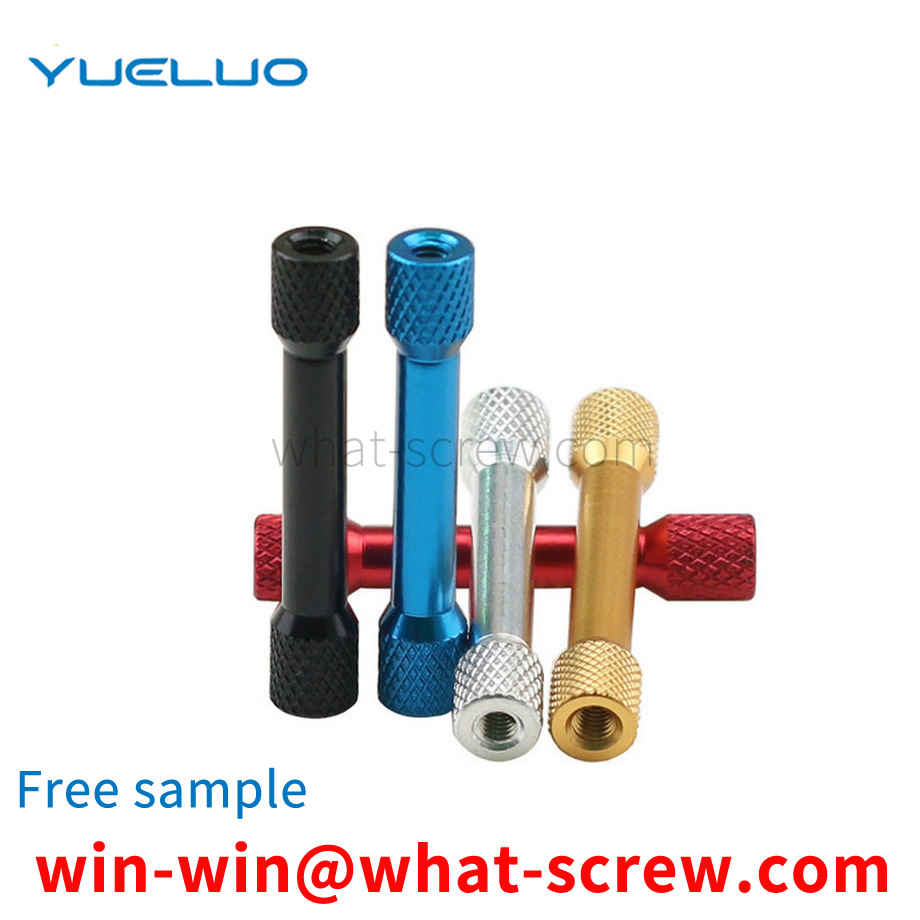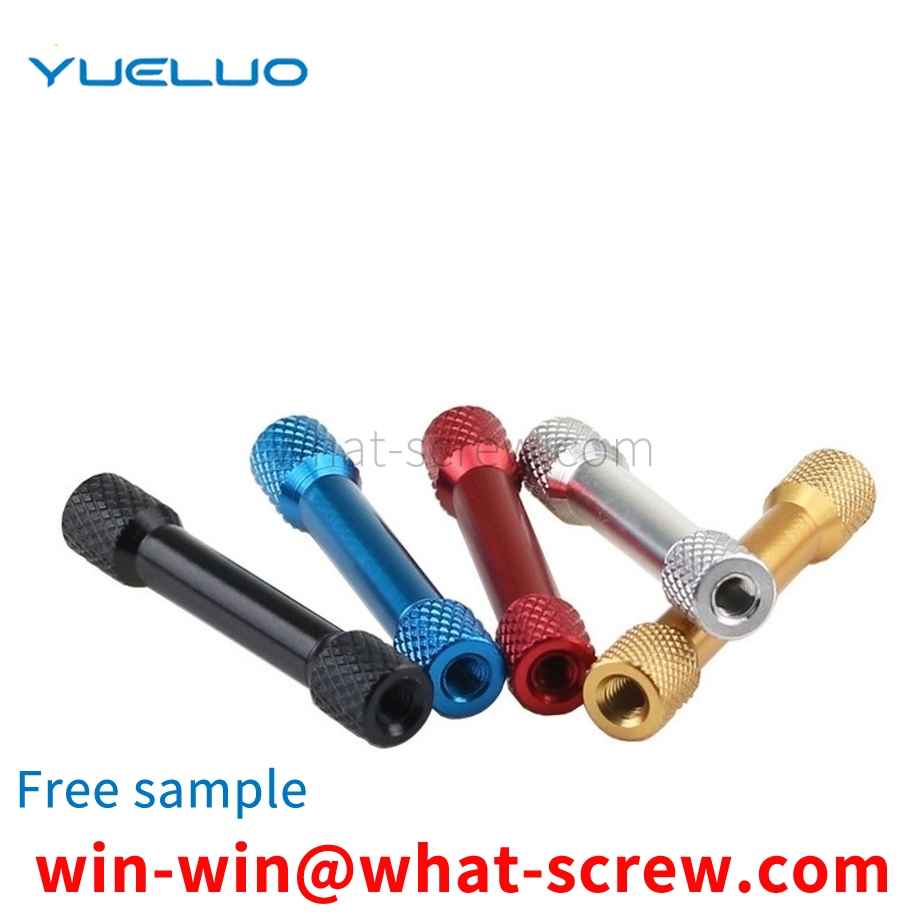1. For low strength (below 500 N/mm2 or below 60000 psi) bolts use general soft steel, generally use SAE 1008 or JIS SWRM 8 (or SWRCH 8). 2. Lower strength (600 N/mm2 or 74000 psi) ) bolts use general soft steel, but limited carbon content grade, generally use SAE 1010 - 1015 or JIS SWRM 10 - 15 (or SWRCH 10 - 15). .3. Higher strength ( 800 N/mm2 or 125000 psi ) bolts of medium carbon steel, low carbon boron steel plus quenching and tempering, generally use SAE 1035 - 1040 or SWRCH 35K - 40K. 4. High strength (900 N/mm2 or more or 150000 psi or more) bolts use medium carbon Alloy steel or low carbon boron steel, in terms of application, if the metric Class 10.9 uses low carbon boron steel, the imprint should be added under the series imprint to become 10.9, and the imprint of the inch 8.2 grade is also used with the general Grade 8 bolts The imprint is different for easy identification. High-strength bolts made of low carbon boron steel cannot be used in high temperature conditions. The design strength exceeds Class 12.9 or ASTM A574 ultra-high strength bolts are limited to medium carbon alloy steel plus quenching and tempering. The performance grades of bolts for steel structure connection are divided into more than 10 grades such as 3.6, 4.6, 4.8, 5.6, 6.8, 8.8, 9.8, 10.9, 12.9, etc. Among them, the bolts of grade 8.8 and above are made of low-carbon alloy steel or medium-carbon steel and are heat-treated (quenching, tempering), commonly known as high-strength bolts, the rest are commonly known as ordinary bolts. The bolt performance grade label consists of two parts of numbers, which represent the nominal tensile strength value and yield ratio of the bolt material respectively. For example, a bolt with a performance level of 4.6 means: 1. The nominal tensile strength of the bolt material is 400MPa; 2. The yield ratio of the bolt material is 0.6; 3. The nominal yield strength of the bolt material is 400×0.6=240Mpa . Performance level 10.9 high-strength bolts, after heat treatment, can achieve: 1. The nominal tensile strength of the bolt material is 1000MPa; 2. The yield ratio of the bolt material is 0.9; High-strength bolts, processing and manufacturing problems are compared Small, general fastener manufacturing companies can master the manufacturing process; but problems are prone to occur in material selection and heat treatment. Material selection is the primary link. Various alloying elements have a great influence on the properties of the material, and the material must be subjected to spectral composition analysis; secondly, the fracture problem and the choice of heat treatment process have a great influence and are very important. Dealers and traders must control the inspection and performance testing links; automotive fasteners have high requirements and must carefully control the quality.
Sometimes, the iron screws are often seen broken, and sometimes, the stainless steel screws are also seen broken. But generally speaking, stainless steel screws rarely break. Because the stainless steel screw wire itself is relatively hard. But under certain circumstances, stainless steel screws can still break. So what are the main reasons for stainless steel screws to break? The reasons for the fracture of stainless steel screws are as follows: 1. The quality of raw materials used for stainless steel screws is poor, and the quality of stainless steel screws is not good. There are many impurities, impure, resulting in insufficient hardness of stainless steel screws. 2. The production process of stainless steel screws. For example, stainless steel screws with eccentric head and eccentricity, and the Q value is too deep and the R position design is too small during the down punching operation during production. 3. The customer uses too much force when using stainless steel screws. Generally, you do a torque test to see how much the minimum breaking force is, and then adjust the torque. Of course, stainless steel screws must be broken for more than three reasons. But the above three reasons are the main reasons for the fracture of stainless steel screws. When the stainless steel screw is found to be broken, it can be checked step by step. Find out what's causing it.
The conventional auger bit structure 1 includes a rod body 11, a screw head 12 provided on one end of the rod body 11, a drill tail 13 provided on the other end of the rod body 11, and a plurality of threads 14 arranged around the rod body 11; Wherein, the periphery of the drill tail 13 defines a parting line 15, and the parting line 15 makes the drill tail 13 symmetrically divided into a side 131 and a side 132, and a cutting end 133 is formed at the junction of the end of the side 131 and the end of the side 132, respectively. The cutting end 133 is concavely provided with a quarter-turn chip flute 134 in the same direction of the helix, and the edge 132 continues the chip flute 134 and has a quarter-turn chip flute 135 with different helical curvatures. , by connecting the chip groove 134 and the chip groove 135 through different helical curvatures, the drill tail 13 can form a symmetrical and complete chip groove of 188 degrees.
A pull rivet, this kind of pull rivet has good installation performance, firm connection and long service life, but the defects are: first, after installation and use, if it is damaged, it cannot be reused; second, it is convenient to disassemble, and it also increases the possibility of theft ,. It is not conducive to safety; 3. There is still the possibility of movement in the circumferential direction of the collar, which will affect the riveting effect.
The main purpose of the embedded nut is to replace the direct opening of screw holes on the injection molded parts, so as to improve the strength of the screw holes of the injection molded parts. Referring to FIG. 1 , in order to lock the workpiece 3 ′ on the injection molded part 2 ′, the screw 5 ′ passes through the through hole on the workpiece 3 ′ and is screwed into the screw hole of the embedded nut 1 ′ to fix the workpiece 3 ′. The embedding between the embedded nut 1' and the injection-molded part 2' generally includes two ways. One is to heat the embedded nut 1' and then insert it into the injection-molded part 2' by hot pressing; the other is to insert the embedded nut into the injection-molded part 2'. 1' and the injection part 2' are integrally injection-molded. In order to ensure the bonding strength between the inner nut 1' and the injection molded part 2', knurling is provided on the outer peripheral surface of the inner nut 1'.
We have many years of experience in the production and sales of screws, nuts, flat washers, etc. The main products are: 8.8 grade hot-dip galvanized hexagonal nuts, cylindrical nuts, metric plug bolts, non-standard aluminum nuts and other products, we can provide you with suitable products for you fastener solutions.



















 Service Hotline
Service Hotline




